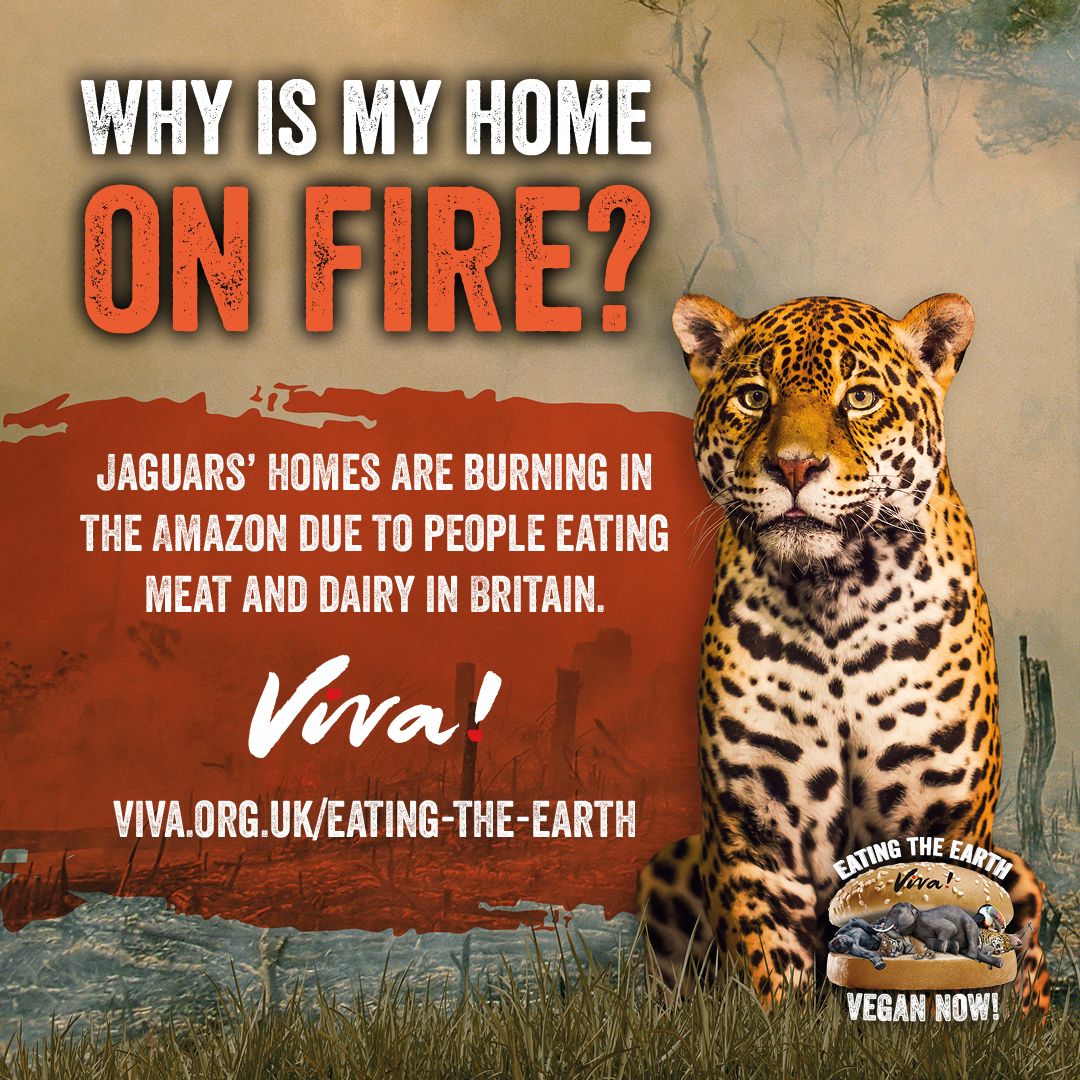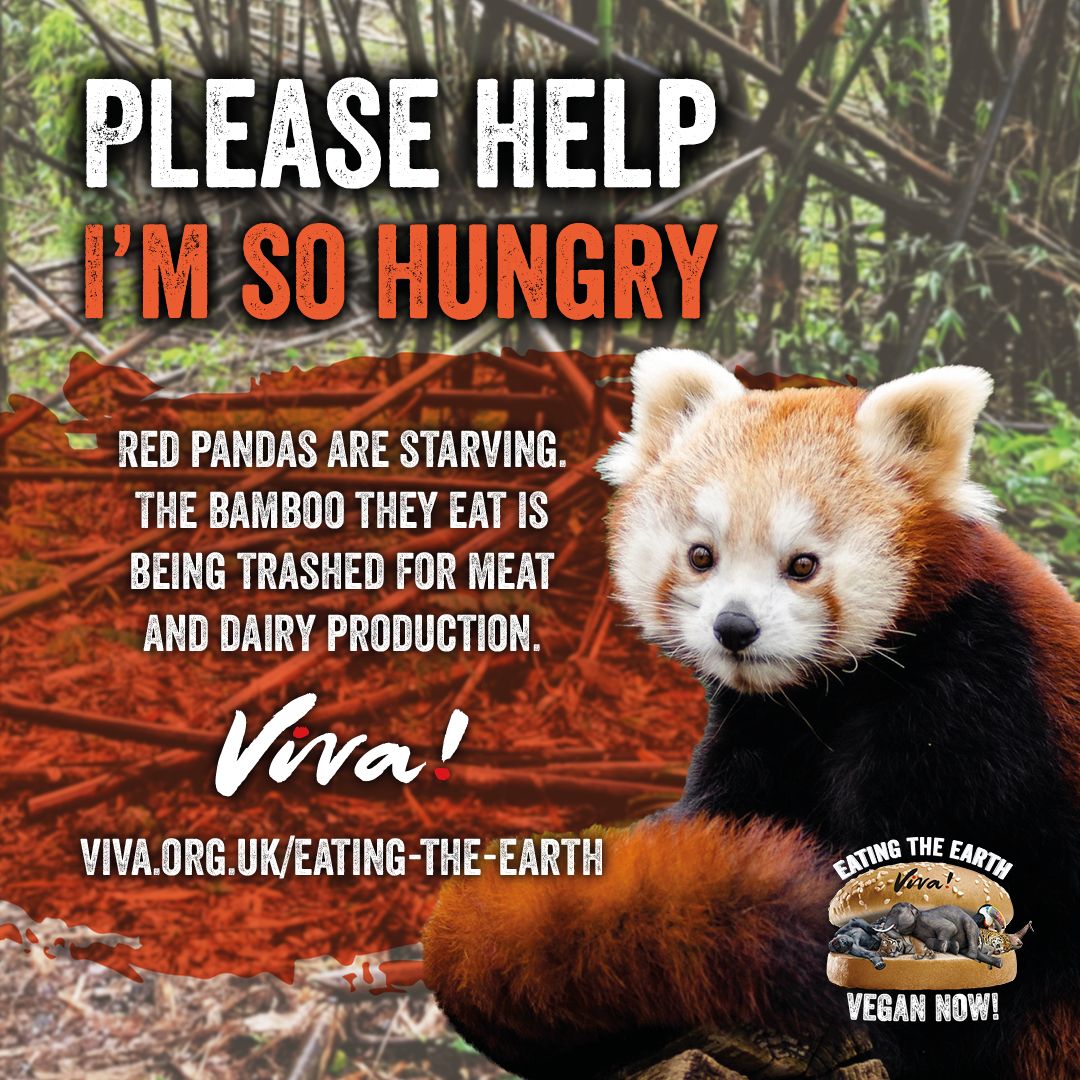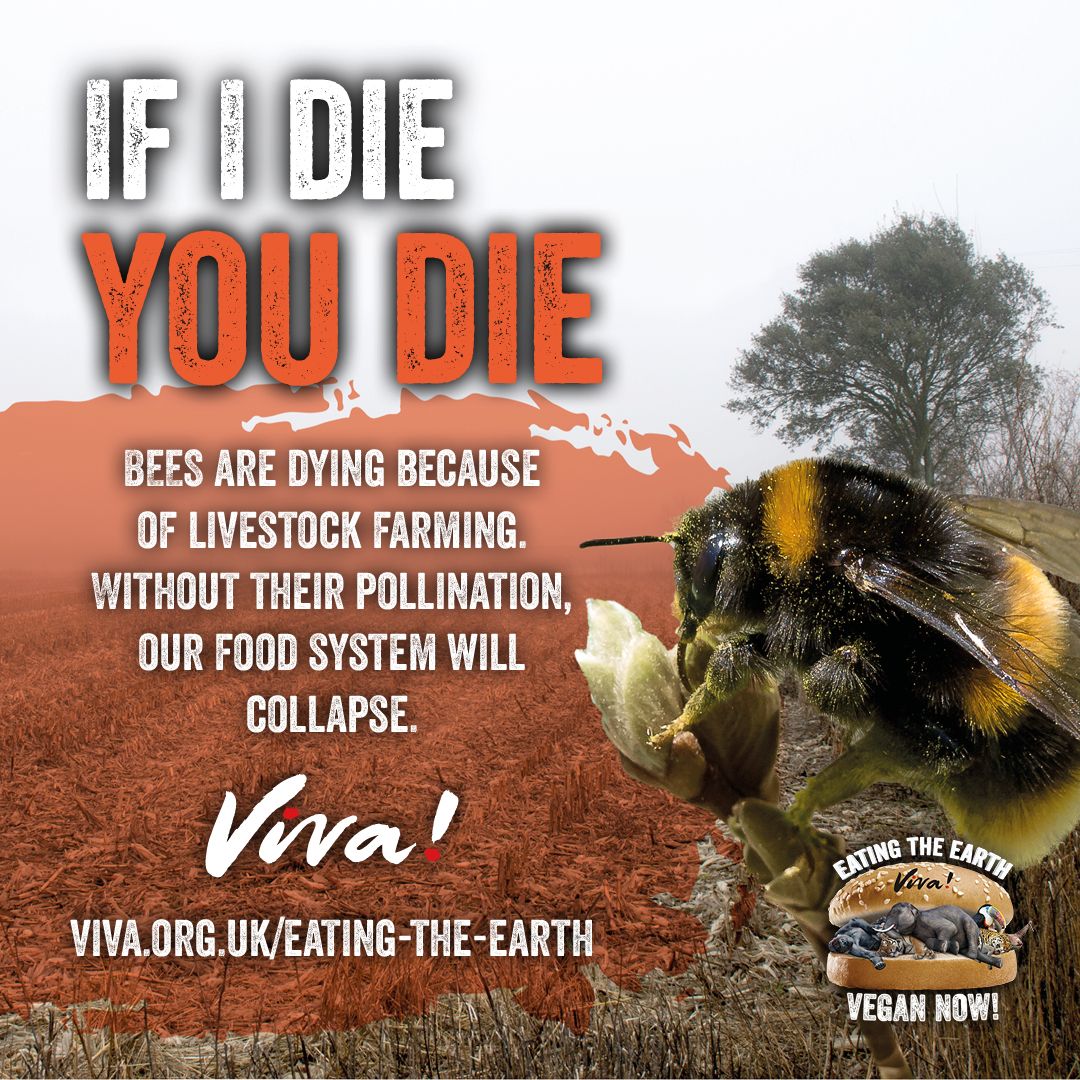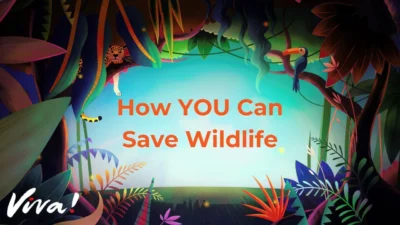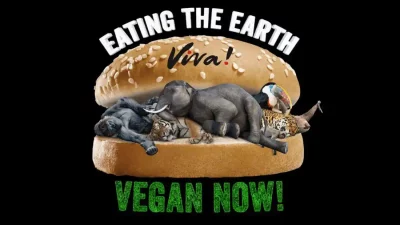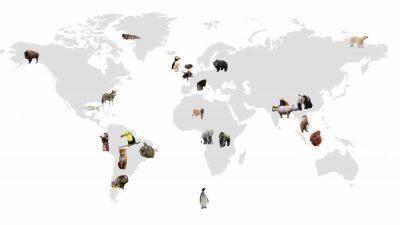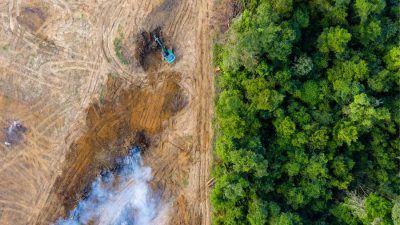Viva!’s Animal Ambassadors
Eating meat, dairy, fish and eggs is the leading cause of wildlife and biodiversity loss. Viva!’s moving series of animal ambassadors will be telling the stories of a small selection of the thousands of wild animals directly threatened by the global demand for animal products.
Help raise awareness by sharing our ambassador graphics on your social media channels.
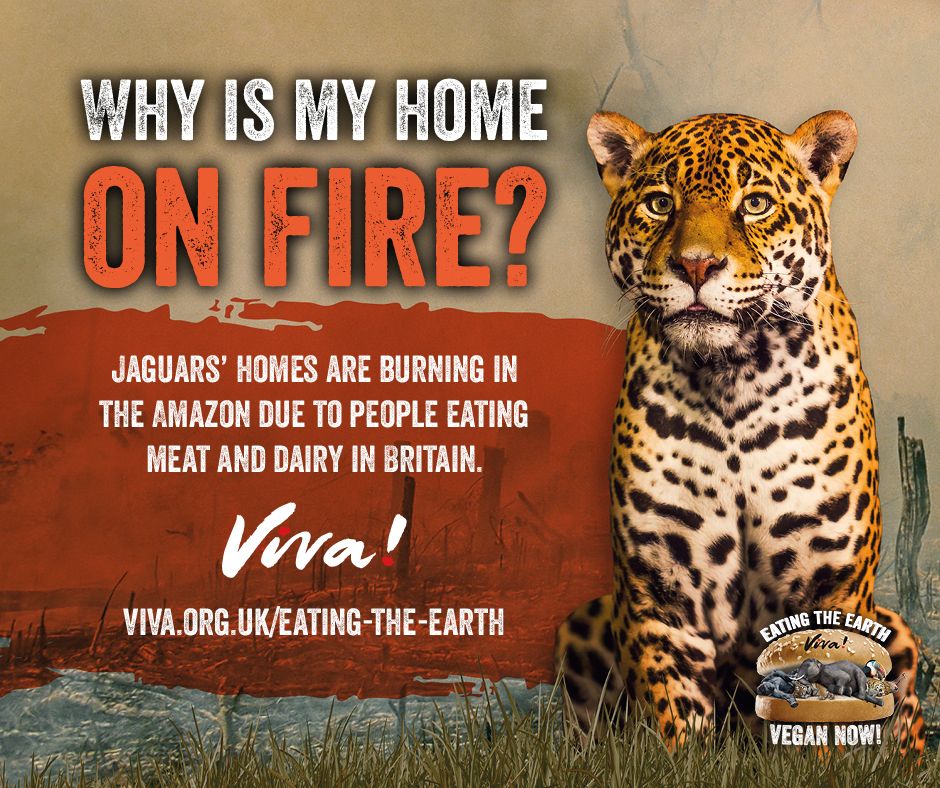
Weaving between the tall trees of tropical rainforests and wading through the lowland rivers, jaguars’ striking spotted patterns are an iconic image of the Amazon basin. Once free to roam across the Southern United States, Central and South American countries, the largest wild cats in the Americas now cover just half of their historic range. Dwindling forest patches are a severe threat to jaguars, with their population numbers in sharp decline.
Invading the jaguars’ once biodiverse-rich habitats are industrial cattle ranches and vast expanses of soya crops grown to be fed to farmed animals in factory farms across the world – including the UK. To clear the land quickly, forests are cut down and set ablaze, leaving jaguars without a home.
To put it simply – their homes are burning, and jaguars are dying, so people can eat meat and dairy.
Delve deeper into the heartbreaking plights of these majestic animals, here.

Rarely coming down to the forest floor, the reclusive red panda hides in the branches of the montane forests of the eastern Himalayas and southwestern China, swinging across the canopy and nibbling on bamboo shoots and leaves.
Using their sharp claws to grip onto slippery branches, they are masters in disguise, with their moss-resembling coats camouflaging them from predators below. While they might be experts at escaping their natural predators of snow leopards and jackals, they are struggling to outrun the devastating impacts of the meat and dairy industry.
The trees that red pandas are reliant on for survival are being chopped down so that domestic livestock can roam the forest floor, where they then trample and eat the red panda’s primary food source – Himalayan bamboo. This bamboo is extremely sensitive to environmental degradation, including deforestation, forest fires and extreme weather events, so as the climate crisis worsens, their food supplies will become further depleted. As temperatures continue to rise from the human-induced climate emergency these elusive tree dwellers will have to move northwards or find themselves without a home.
In essence, red pandas are starving and are being forced from their homes because of the global demand for meat and dairy. It is estimated that their population now stands at less than 10,000 individuals. If no action is taken, they are in danger of becoming extinct.
Learn more about the threats facing red pandas, here.

Found stomping across the tropical rainforests of West and Central Africa, the elusive African forest elephant is one of the largest living terrestrial mammals on our planet. These friendly giants play an essential role in combatting the human-induced climate crisis, as they trample smaller plants to create space for trees to grow larger and store more carbon. Coupled with their important role as seed dispersers, they are crucial for healthy biodiversity and humanity’s future survival.
It is predicted that if elephants were to go extinct, the amount of carbon stored in central African rainforests could fall by seven per cent! According to the IUCN Red List, they are critically endangered, so this worrying scenario could soon become reality as rapid land use change for agriculture and meat and dairy production drives habitat loss. If we want to help save elephants, we need to look at changing what we eat.
Discover the animals under threat of extinction due to meat and dairy here.
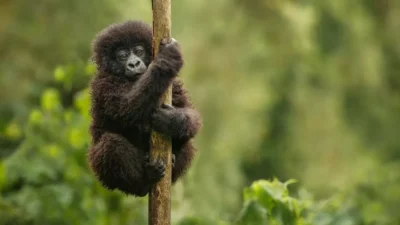
Hiding away in the high-altitude forests of Uganda, Rwanda and the Democratic Republic of the Congo, the endangered mountain gorillas are running out of space to live.
The impacts of the climate crisis, coupled with land use pressure from human populations, such as the conversion of their home forests for agricultural use, have forced them to higher ground. These hungry gorillas typically spend up to a quarter of their day eating, but rising temperatures and changes in rainfall patterns threaten food availability in the remaining isolated forest patches.
With less than 1,200 remaining in the wild, healthy forest patches dwindling and limited space northwards left – these gorillas need our help. Learn more about the threats facing mountain gorillas here.

A unique bird of the Amazon, toucans are famous for their colourful and strikingly large bills. A highly social species, they have been found to gather in flocks of up to 20 individuals, high up in the rainforest’s canopies. But they are increasingly under threat.
These exotic birds live in the tropics of America, favouring old-growth forests to nest in. Over a fifth of their species face eradication with 11 out of 50 species being threatened or near threatened with extinction, partly fuelled by the UK’s appetite for meat and dairy. Deforestation in the Amazon basin to make way for cattle and soya production for animal feed, destroys the jungle habitats toucans rely on for survival. But we are also reliant on these birds as they are essential in preserving the lungs of our planet. As excellent seed dispersers, they play a vital role in spreading fruit trees far and wide that absorb carbon dioxide from the atmosphere and so, help mitigate the climate crisis.
Help ensure their survival and our own. Choose vegan.
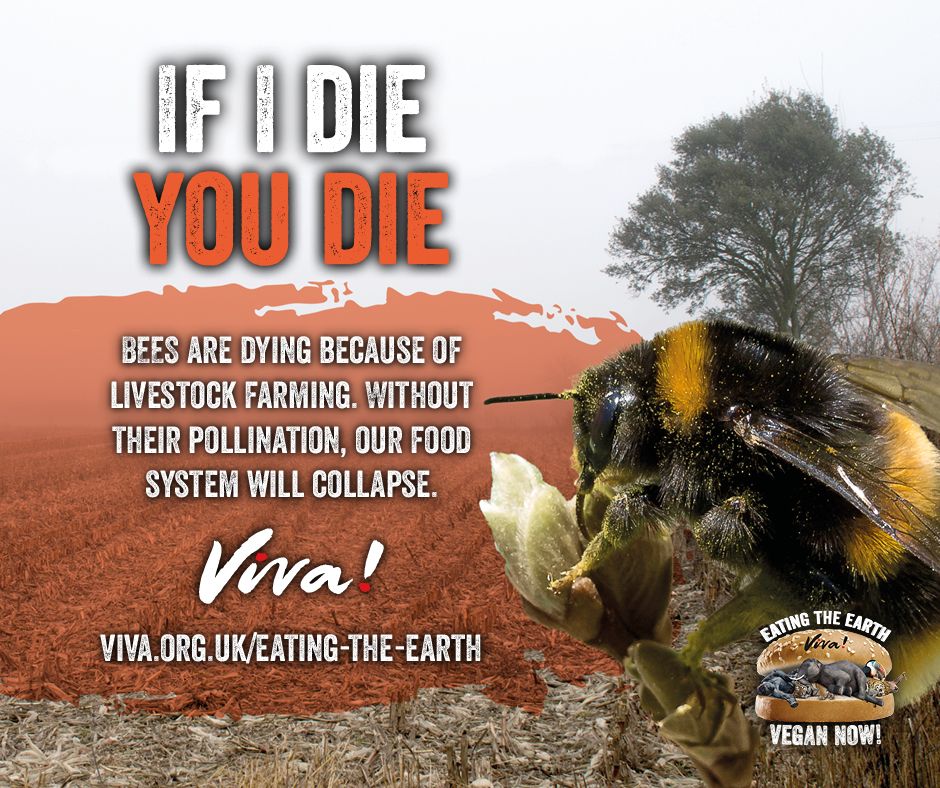
A symbol of the British countryside, you might spot the humble bumblebee buzzing between wild hedgerows and across spring meadows, pollinating plants as it goes. But this picturesque ideal of the bee is being shattered, as livestock farmed for meat and dairy production encroach on their homes.
Intensive farming and grazing are destroying these habitats vital for the bumblebee’s survival. Herbicides and pesticides, many of which are used on the crops grown to feed farmed animals, are also driving the decline of these busy insects.
According to the European Red List of Bees, around a quarter of bumblebee species in Europe are threatened with extinction. But it’s not just the bumblebees’ lives that are at stake here. As one of the most important pollinators for crops, our food system will collapse without them – along with humanity’s future.
Learn more about the key drivers of the bumblebee’s demise, here.




